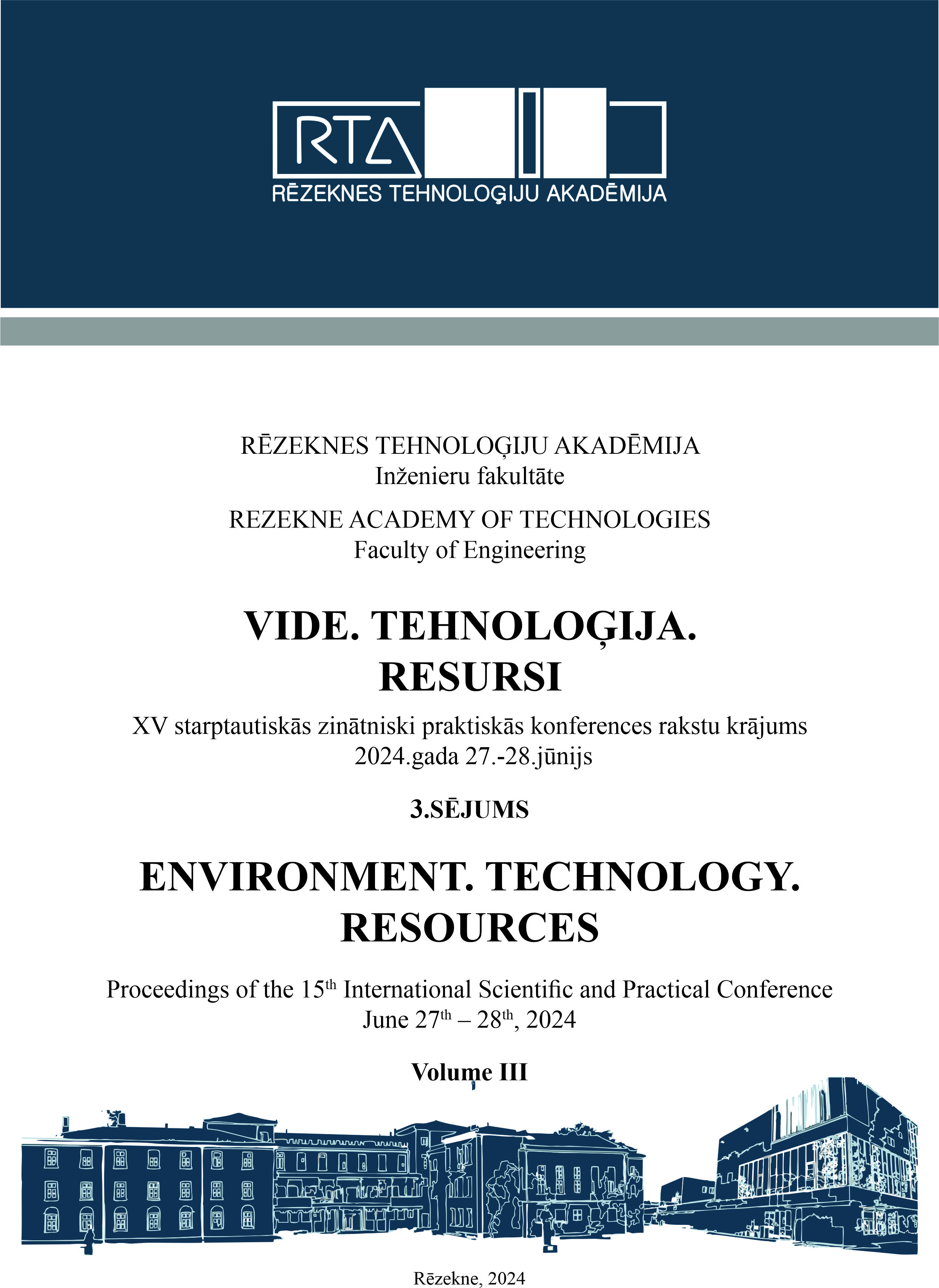DEVELOPMENT OF ORGANISATIONAL COMPETENCIES DURING TRANSITION AND ADAPTATION TO INDUSTRY 4.0.
DOI:
https://doi.org/10.17770/etr2024vol3.8134Keywords:
Organizational competencies, Industry 4.0, digitalization, strategic flexibilityAbstract
Competencies that enable organizations to effectively implement digital technologies and provide them with the ability to adapt to changes in the digital environment can be classified as organizational competencies in the context of digital transformation. During the transition to Industry 4.0, organizations find themselves in conditions of a high level of uncertainty and complexity, which requires them to adapt to the new context. A key factor in this process is competencies that ensure high competitiveness and innovative potential. However, the scientific literature does not sufficiently disclose their content, classification levels, and development opportunities under digitalization conditions. This article attempts to fill this gap by analyzing the impact of new technologies on organizational competencies. A conceptual model is presented, which is based on the assumption that the degree of digitalization strengthens the interaction of higher-level competencies - strategic flexibility and ambidexterity.
References
E. D. Diego and P. Almodovar, “Mapping research trends on strategic agility over the past 25 years: Insights from a bibliometric approach”, European Journal of Management and Business Economics, vol. 31, no. 2, pp. 219-238, April 2022. [Online]. Available: https://doi.org/10.1108/EJMBE-05-2021-0160 [Accessed: Feb. 23, 2024].
I. Kumkale, “Organizational Ambidexterity”, Organizational Mastery, Accounting, Finance, Sustainability, Governance and Fraud: Theory and Application, Singapore: Springer, 2022. [Online]. Available: https://doi.org/10.1007/978-981-16-7582-9_1 [Accessed: Feb. 23, 2024].
A. Pinsonneault and I. Choi, “Digital-enabled strategic agility: It’s time we examine the sensing of weak signals”, European Journal of Information Systems, vol. 31, no. 6, pp. 653-661, January 2022. [Online]. Available: https://doi.org/10.1080/0960085X.2022.2027824 [Accessed: Feb. 23, 2024].
R. Rohrbeck, C. Battistella and E. Huizingh, “The value contribution of strategic foresight: Insights with a rich tradition”, Technological Forecasting and Social Change, vol. 80, no. 8, pp. 1593-1606, October 2013. [Online]. Available: https://doi.org/10.1016/j.techfore.2013.01.004 [Accessed: Feb. 23, 2024].
K. Jermsittiparsert, S. Somjai and K. Chienwattanasook, “Era of Industry 4.0 Technologies and Environmental Performance of Thailand’s Garment Industry: Role of Lean Manufacturing and Green Supply Chain Management Practice”, Agile Business Leadership Methods for Industry 4.0 (ed. B. Akkaya), Bingley: Emerald Publishing Limited, 2020, pp. 285-302.
K. H. Tantawi, A. Sokolov and O. Tantawi, “Advances in Industrial Robotics: From Industry 3.0 Automation to Industry 4.0 Collaboration”, 2019 4th Technology Innovation Management and Engineering Science International Conference (TIMES-iCON), Bangkok, Thailand, 2019, pp. 1-4, [Online]. Available: https://doi.org/10.1109/TIMES-iCON47539.2019.9024658 [Accessed: Feb. 23, 2024].
J. Dean, “Big data, data mining, and machine learning”, Value creation for business leaders and practitioneers. Hoboken, NJ: Wiley, 2014.
H. I. Ostrovska, “Implementation of Advanced Digital Production Technologies within the Framework of Sustainable Development Concept: Problems and Prospects”, Economic Herald of the Donbass. vol. 1 (67), pp. 59-68, September 2022. [Online]. Available: https://doi.org/10.12958/1817-3772-2022-1(67)-59-68 [Accessed: Feb. 23, 2024].
S. L. Newbert, “Value, rareness, competitive advantage, and performance: A conceptual-level empirical investigation of the resource-based view of the firm”, Strategic Management Journal, vol. 29, no. 7, pp. 745-768, April 2008. [Online]. Available: https://doi.org/10.1002/smj.686 [Accessed: Feb. 23, 2024].
S. Fainshmidt, L. Wenger and M. R. Pezeshkan, “When do Dynamic Capabilities Lead to Competitive Advantage? The Importance of Strategic Fit”, Journal of Management Studies, vol. 56, no. 4, pp. 758-787, June 2019. [Online]. Available: https://doi.org/10.1111/joms.12415 [Accessed: Feb. 23, 2024].
D. J. Teece, “Business models and dynamic capabilities”, Long Range Planning, vol. 51, no. 1, pp. 40-49, February 2018. [Online]. Available: https://doi.org/10.1016/j.lrp.2017.06.007 [Accessed: Feb. 23, 2024].
K. Randhawa, R. Wilden and S. Gudergan, “How to innovate toward an ambidextrous business model? The role of dynamic capabilities and market orientation” Journal of Business Research, vol. 130, no. 1, pp. 618-634, June 2021. [Online]. Available: https://doi.org/10.1016/j.jbusres.2020.05.046 [Accessed: Feb. 23, 2024].
G. Feldberg and A. Metrick, Stress Tests and Policy, July 2019 [Online]. Available at SSRN: https://doi.org/10.2139/ssrn.3424327 [Accessed: Feb. 23, 2024].
H. Zhang, Y. Wang and M. Song, “Does Competitive Intensity Moderate the Relationships between Sustainable Capabilities and Sustainable Organizational Performance in New Ventures?” Sustainability, vol. 12, no. 1, pp. 13-27, January 2020. [Online]. Available: https://doi.org/10.3390/su12010253 [Accessed: Feb. 23, 2024].
T. Clauss, S. Kraus, F. L. Kallinger, P. M. Bican, A. Brem and N. Kailer, “Organizational ambidexterity and competitive advantage: The role of strategic agility in the exploration-exploitation paradox”, Journal of Innovation and Knowledge, vol. 6, no. 4, pp. 203-213, October–December 2021. [Online]. Available: https://doi.org/10.1016/j.jik.2020.07.003 [Accessed: Feb. 23, 2024].
E. Hadjielias, M. Christofi, P. Christou and M. H. Drotarova, “Digitalization, agility, and customer value tourism”, Technological Forecasting and Social Change, vol. 175, pp. 121-334, February 2022. [Online]. Available: https://doi.org/10.1016/j.techfore.2021.121334 [Accessed: Feb. 23, 2024].
Downloads
Published
Issue
Section
License
Copyright (c) 2024 Iryna Bohashko, Oleksandr Bohashko

This work is licensed under a Creative Commons Attribution 4.0 International License.



